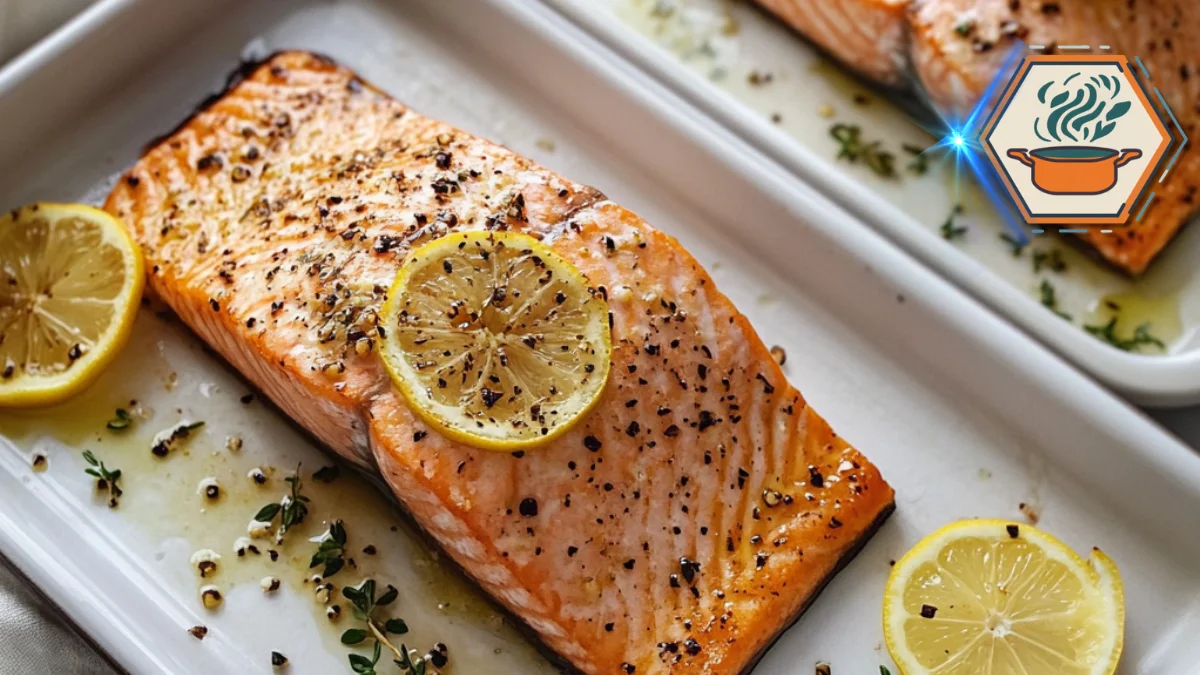Table of Contents
Nutritional Comparison of Baked and Fried Salmon
| Feature | Baked Salmon | Fried Salmon |
|---|---|---|
| Cooking Method | Oven-baked at moderate temperatures | Pan-fried or deep-fried in hot oil |
| Calorie Content | ~200 calories per serving | ~300-400 calories per serving |
| Fat Content | Lower in saturated fat (no added oil) | Higher fat due to oil absorption |
| Nutrient Retention | Preserves omega-3s and vitamins | Loss of some nutrients due to high heat |
| Texture | Moist, flaky, and tender | Crispy exterior with juicy inside |
| Flavor | Mild, natural fish flavor | Rich, savory, and bold flavor |
| Best Occasions | Healthy meals, meal prep, light dinners | Special occasions, indulgent or comfort meals |
| Environmental Impact | Lower (less energy and no oil waste) | Higher (uses more oil and energy) |
| Cooking Time | 12–15 minutes | 4–5 minutes per side |
| Ease of Cooking | Simple, less hands-on | Requires attention to avoid burning |
When deciding between baked or fried salmon, understanding the nutritional impact of each method is essential. Choosing the right cooking style can significantly influence its health benefits. Let’s explore how baking and frying influence salmon’s nutrients, calorie content, and overall health value.
Nutrient Retention in Baking vs. Frying
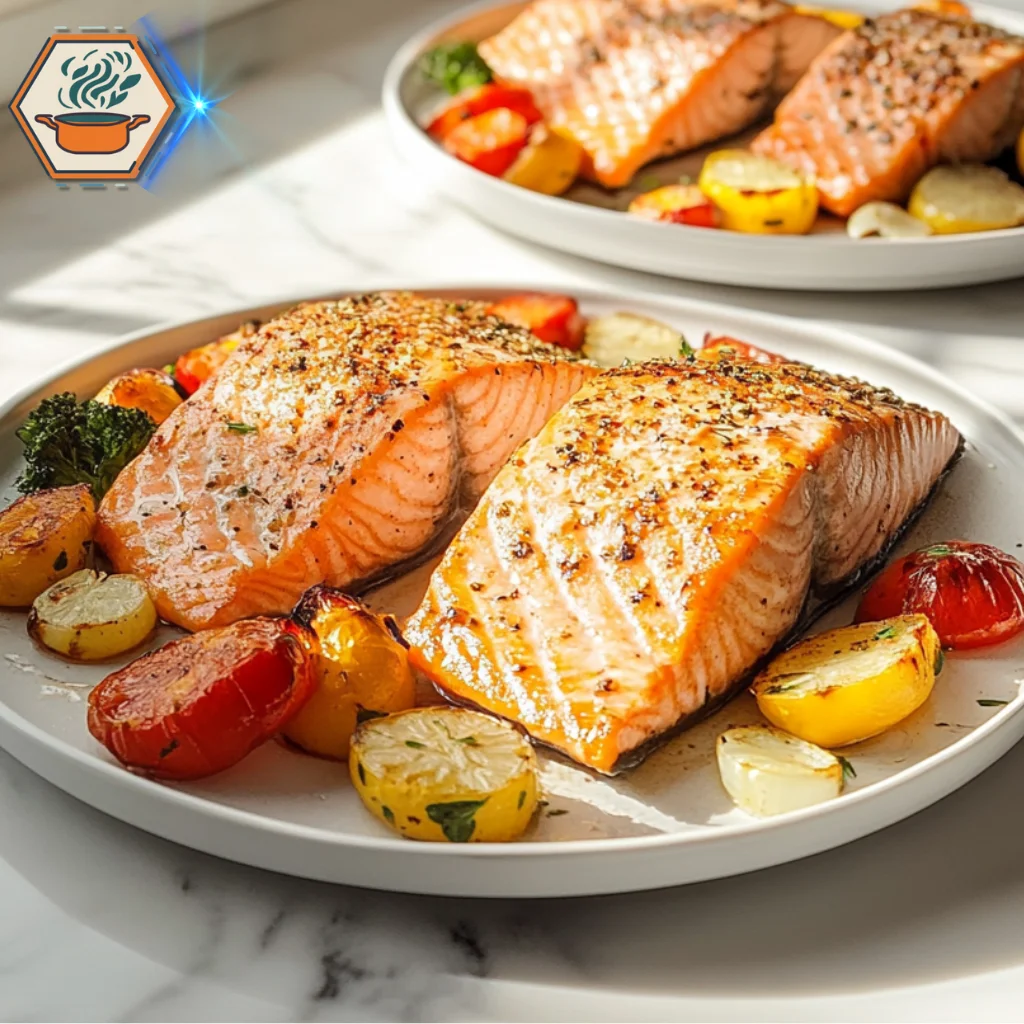
Cooking affects how many nutrients remain in salmon after preparation. Baking salmon is a gentler method, helping to preserve more vitamins and minerals compared to frying. This method doesn’t require additional oil, which keeps the nutrient profile close to its natural state.
Frying, on the other hand, can cause some nutrient loss. The high heat used in frying can break down certain vitamins, such as vitamin D, which is abundant in salmon. Additionally, frying requires oil, which may change the natural fat composition of the fish. Although fried salmon may taste richer, it can lose some of its essential health benefits.
For a healthier alternative to traditional deep-frying, consider preparing salmon in an air fryer. This method reduces fat absorption while achieving a crispy texture. For a variety of air fryer salmon recipes, you can refer to the following resource: Air Fryer Salmon Recipes
Impact on Omega-3 Fatty Acids
One of the biggest reasons people choose salmon is its omega-3 content. These fats are sensitive to heat, and the cooking method can affect their integrity. Baking salmon at moderate temperatures preserves omega-3 fatty acids better than frying, ensuring you get the full heart-health benefits.
Frying salmon can degrade omega-3s due to the high heat. If the oil used in frying is low-quality or partially hydrogenated, it can reduce the overall nutritional value. To retain omega-3s while frying, use methods like shallow frying and cook for a shorter time.
The American Heart Association emphasizes that cooking methods significantly influence the preservation of omega-3 fatty acids in fish. Healthier techniques such as baking, broiling, steaming, or poaching are recommended to maintain the beneficial properties of these essential fats. In contrast, frying can diminish the omega-3 content and introduce unhealthy trans fats, reducing the cardiovascular benefits of fish consumption.
Which Method Supports a Healthier Diet?
When it comes to choosing between baked or fried salmon, baked options align more closely with a balanced diet. Baking doesn’t involve added fats, keeping the calorie count lower and retaining more nutrients. This method also avoids harmful compounds that may form during high-heat frying.
Fried salmon can fit into an occasional treat or cheat meal. For those who prioritize flavor over calorie count, frying is an excellent way to enjoy crispy and flavorful salmon. Pairing fried salmon with lighter sides like a green salad or steamed vegetables can balance out the meal.
For those following stricter health goals, baked salmon with lemon and herbs is an excellent choice. This simple recipe enhances natural flavors without adding extra calories.
Both methods have their merits, but understanding the nutritional impact of each allows you to make informed decisions for your meals.
Taste and Texture Differences
| Aspect | Baked Salmon | Fried Salmon |
|---|---|---|
| Flavor Intensity | Mild, natural, and slightly sweet | Bold, rich, and savory |
| Texture | Soft, flaky, and tender throughout | Crispy outer layer with a moist interior |
| Cooking Flexibility | Pairs well with herbs, citrus, and light marinades | Great for bold spices, breading, and sauces |
| Serving Suggestions | Lemon and dill, quinoa salad, steamed veggies | Fries, coleslaw, spicy dips |
| Preparation Effort | Low-effort, hands-off cooking | Requires attention to avoid overcooking |
| Presentation | Simple and elegant for health-conscious meals | Golden, crispy, and indulgent for comfort food |
| Ideal for Diets | Low-fat, heart-healthy, and weight-conscious | Higher fat content, suitable for cheat meals |
| Meal Type | Light lunches, meal preps, or family dinners | Occasional indulgence, appetizers, or parties |
Flavor Profile of Baked Salmon
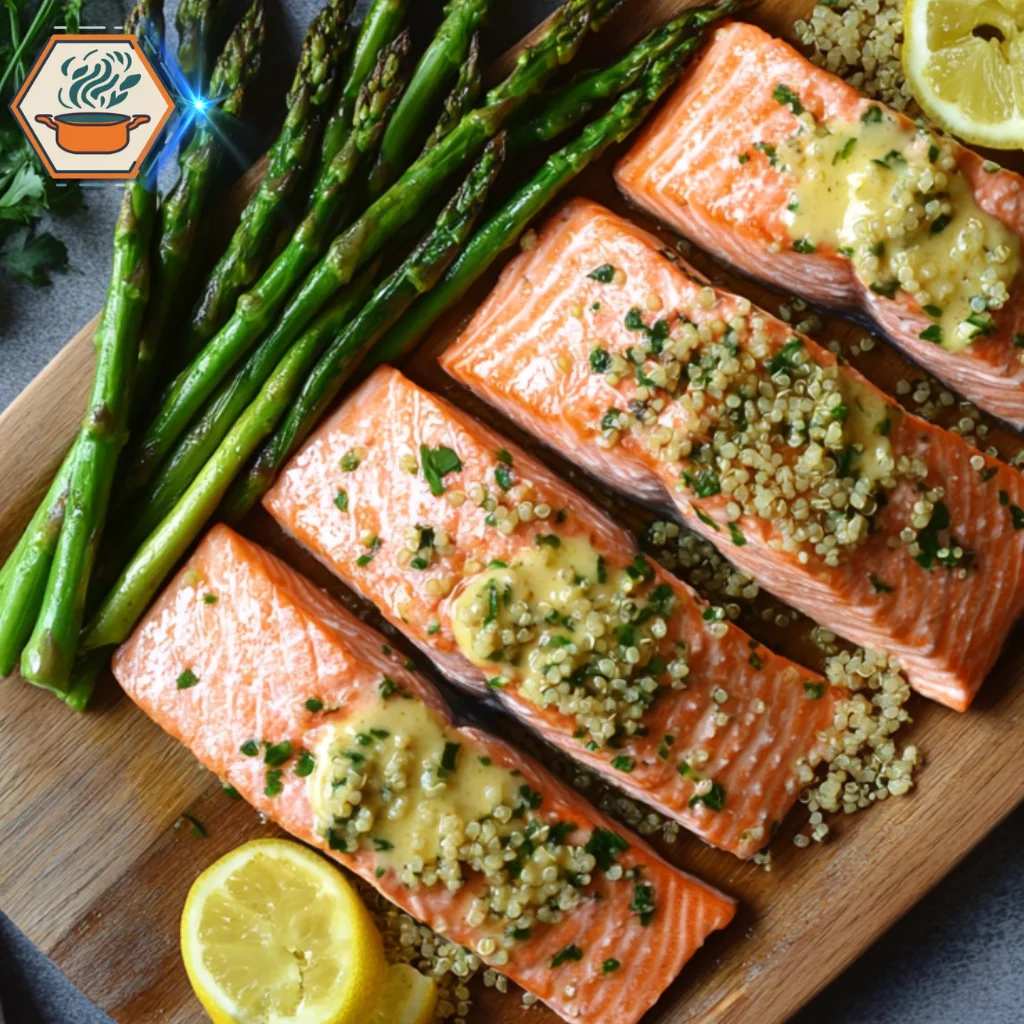
When comparing baked or fried salmon, the flavor of baked salmon stands out for its subtle and natural taste, while fried salmon offers a bold and savory experience. Baking preserves the fish’s original flavors, allowing the rich, buttery notes of salmon to shine. Slow cooking in the oven helps retain moisture, making the salmon tender and juicy. Baking also enhances the fish’s natural oils, creating a mild sweetness that pairs well with light herbs and citrus.
How Frying Affects Salmon’s Taste
When deciding between baked or fried salmon, frying delivers a bold and savory taste. The high heat from frying caramelizes the outer layer, creating a crispy crust. This method intensifies the fish’s umami flavors, especially when coated with seasoned flour or breadcrumbs. Fried salmon often tastes richer due to the oil used, giving it a more indulgent flavor.
Texture Comparison: Crispy vs. Tender
The texture of baked-or-fried-salmon greatly depends on the cooking method. Baked salmon offers a moist and flaky texture. The gentle heat cooks the fish evenly, ensuring it stays tender throughout. On the other hand, fried salmon has a crispy exterior with a juicy center. The contrast between the crunchy crust and the soft fish inside creates a delightful bite.
Baking is ideal for those who prefer a soft and delicate texture, while frying suits those craving a satisfying crunch.
Popular Seasonings for Baking and Frying
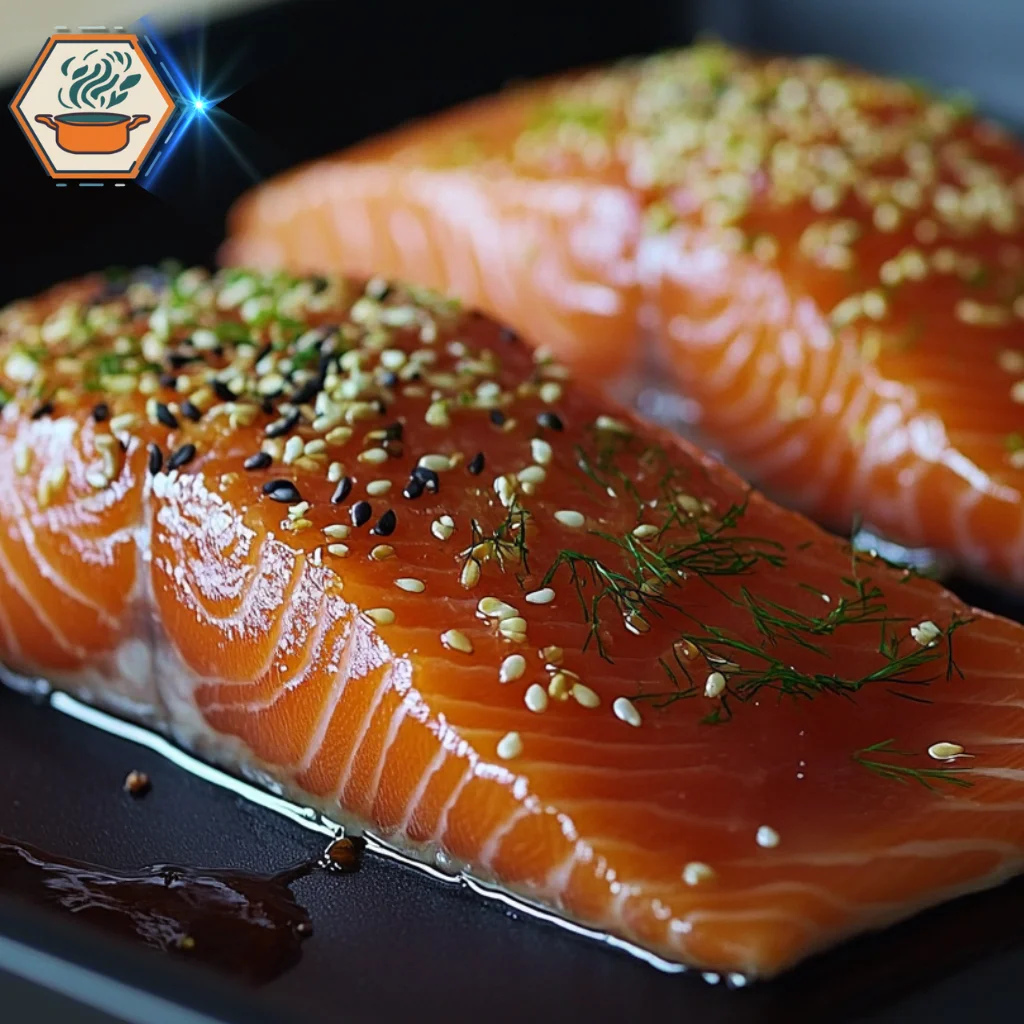
Both cooking methods for baked or fried salmon benefit from different seasoning styles, allowing for various flavor profiles to shine:
For Baked Salmon:
- Lemon and dill
- Garlic and rosemary
- Honey mustard glaze
- Olive oil and cracked pepper
For Fried Salmon:
- Cajun seasoning
- Garlic powder and paprika
- Panko breadcrumbs with herbs
- Soy sauce and sesame seeds
Seasonings for baked salmon tend to be lighter, highlighting the fish’s natural taste. Fried salmon, however, can handle bold and spicy flavors.
Pairing Sides with Each Cooking Style
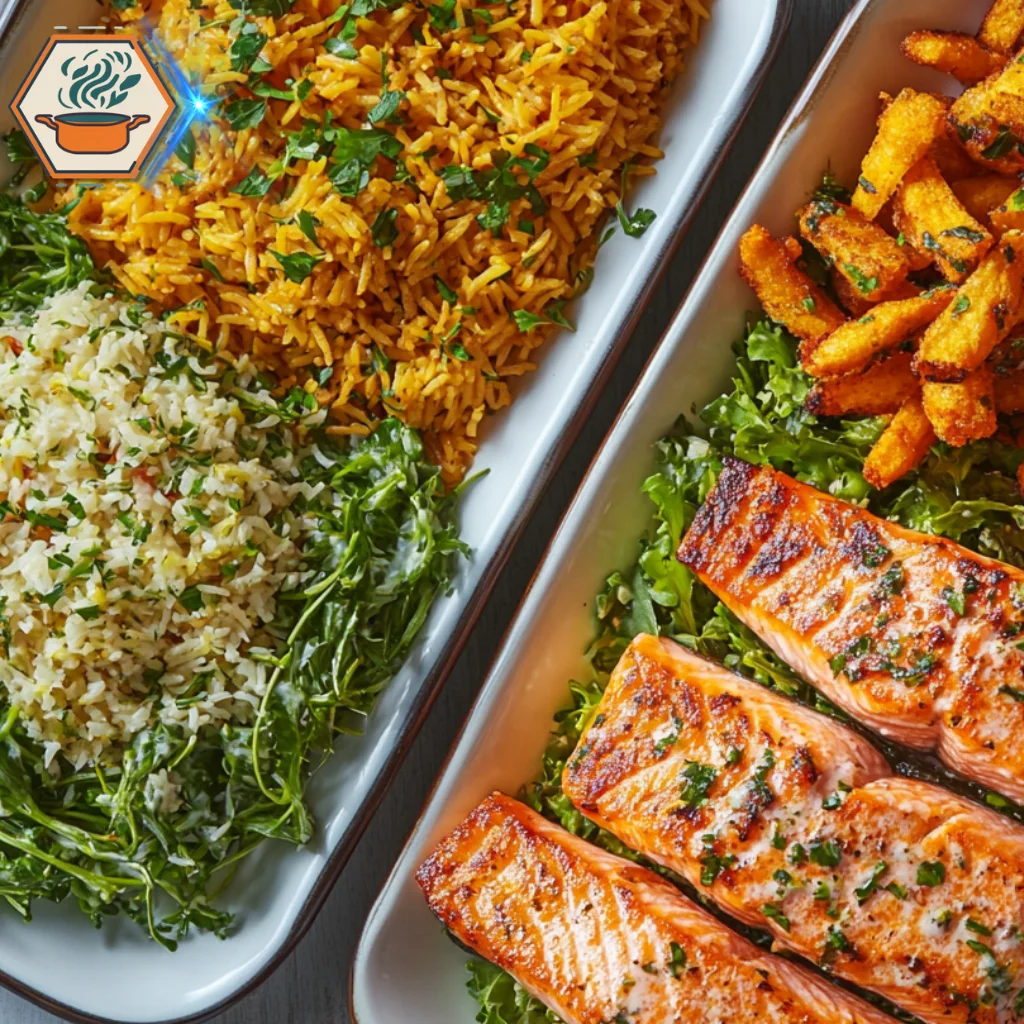
The sides you choose can enhance the experience of eating baked-or-fried-salmon:
Best Sides for Baked Salmon:
- Steamed asparagus
- Quinoa salad
- Roasted Brussels sprouts
- Lemon rice pilaf
Best Sides for Fried Salmon:
- French fries or sweet potato fries
- Coleslaw
- Cornbread
- Spicy aioli dip
Choosing the right sides can complement the distinct flavors and textures of baked or fried salmon, making the meal more enjoyable.
Cooking Methods and Techniques
How to Bake Salmon Perfectly
Mastering the art of cooking baked or fried salmon starts with understanding the proper techniques for both baking and frying. BBaking is one of the healthiest ways to prepare baked or fried salmon, offering a simple method to enjoy this nutritious fish. To bake salmon perfectly, preheat your oven to 375°F (190°C). Start by seasoning the fillet with salt, pepper, and your favorite herbs. Placing lemon slices on top adds extra flavor and moisture. Line a baking sheet with parchment paper or lightly oil it to prevent sticking. Bake the salmon for 12-15 minutes, depending on the thickness.
For a twist, you can also apply these helpful cooking tips to other fish recipes, like our guide on Salmon with Cream Cheese.
Best Oils for Frying Salmon
When frying salmon, choosing the right oil is crucial. Oils with high smoke points work best because they can handle high heat without burning. Some ideal options include:
- Avocado oil (smoke point: 520°F/271°C)
- Canola oil (smoke point: 400°F/204°C)
- Grapeseed oil (smoke point: 420°F/216°C)
- Peanut oil (smoke point: 450°F/232°C)
For crispy results when preparing baked or fried salmon, heat the oil in a non-stick or cast-iron skillet over medium-high heat.. Season the salmon and place it skin-side down in the pan. Fry for 4-5 minutes on each side until the skin is crispy and the inside is flaky. Avoid using butter or olive oil due to their lower smoke points, which can lead to burnt flavors.
Common Mistakes to Avoid When Cooking Salmon
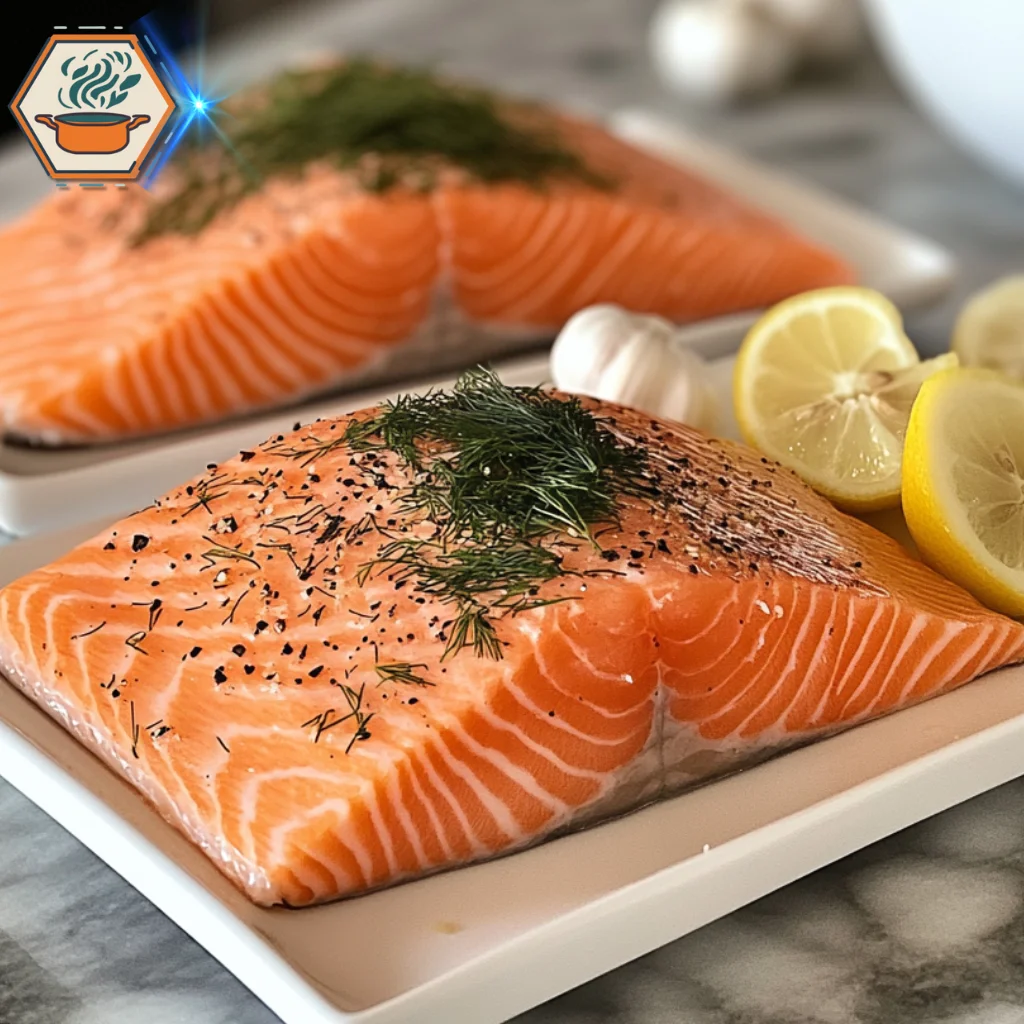
Whether baking or frying, certain mistakes can ruin your salmon dish. Here are common errors and how to avoid them:
- Overcooking: Salmon becomes dry and tough when overcooked. Always monitor the internal temperature.
- Skipping seasoning: Simple seasoning can elevate the flavor. Use herbs, lemon, and garlic for extra taste.
- Cooking cold salmon: Let the fish rest at room temperature for 15 minutes before cooking to ensure even heat distribution.
- Neglecting the skin: The skin helps retain moisture. Cook skin-side down first for a crispy texture.
For more salmon recipes, check out our guide on What Sauce Goes with Salmon for more delicious ideas.
Cooking Time and Temperature Differences
Understanding cooking times and temperatures for baked-or-fried-salmon ensures the best results.
Baking:
- Temperature: 375°F (190°C)
- Cooking Time: 12-15 minutes for fillets
Frying:
- Temperature: Medium-high heat (350°F/175°C)
- Cooking Time: 4-5 minutes per side
Baking is more forgiving and retains more moisture. Frying offers a crispy texture but requires close attention to avoid burning. Adjust times based on fillet thickness and personal preference.
For comprehensive food safety guidelines, including recommended internal cooking temperatures, you can refer to the U.S. Food and Drug Administration’s (FDA) resource: Safe Minimum Internal Temperatures
Tools Needed for Baking and Frying
Having the right tools can make cooking salmon easier and more effective. Here are the essentials:
For Baking:
- Baking sheet or glass baking dish
- Parchment paper or aluminum foil
- Meat thermometer
- Silicone brush for oil or butter application
For Frying:
- Non-stick or cast-iron skillet
- Fish spatula (for easy flipping)
- Tongs
- Paper towels (for draining excess oil)
Using quality tools ensures evenly cooked salmon and minimizes sticking or breaking apart. Investing in a good meat thermometer helps avoid overcooking.
Mastering these techniques guarantees delicious and perfectly cooked baked-or-fried-salmon every time.
Environmental and Cost Impact of Baked or Fried Salmon
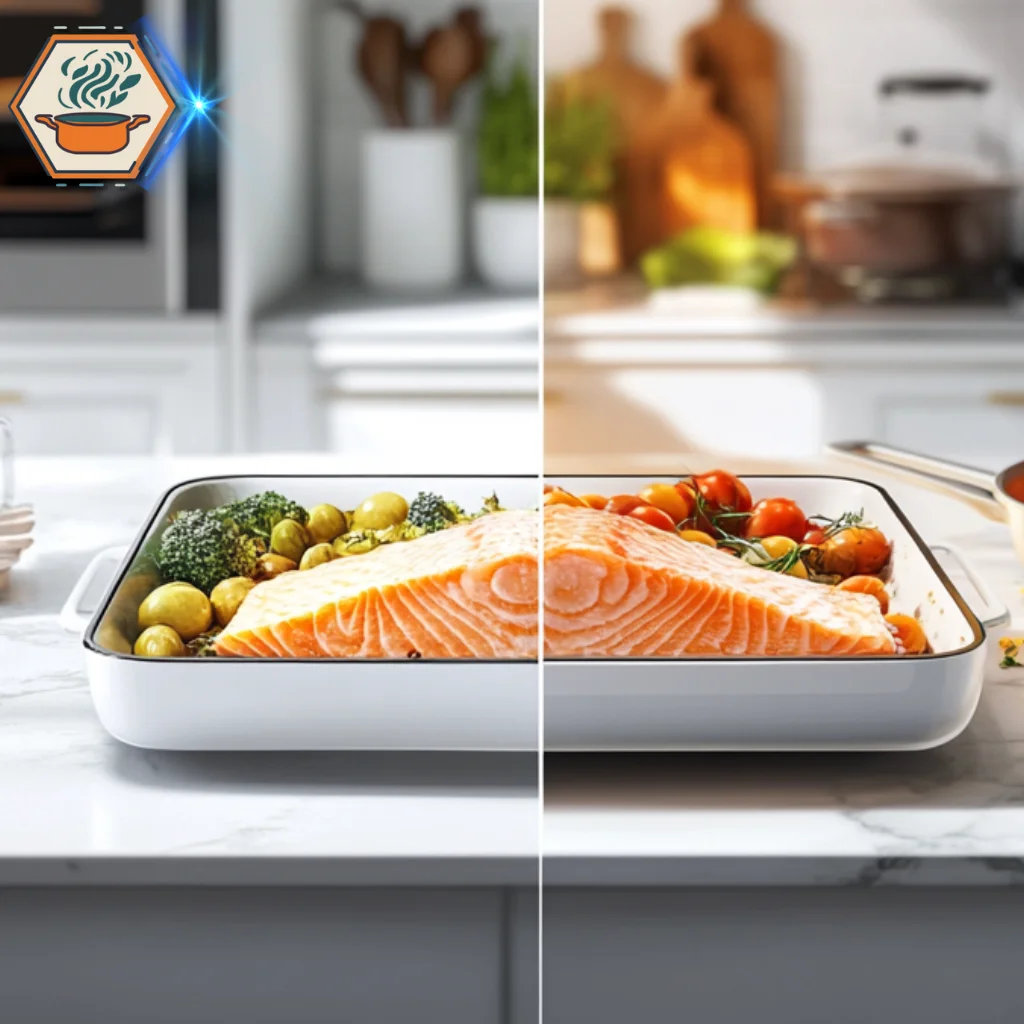
Energy Consumption: Baking vs. Frying
When comparing baked or fried salmon, energy consumption is an important factor. Baking baked or fried salmon requires an oven, which typically uses more energy due to preheating and longer cooking times, while frying consumes less energy but uses more oil. Frying salmon, whether deep-fried or pan-fried, generally uses less energy because of shorter cooking durations. However, using an air fryer can balance energy usage since it cooks quickly and efficiently. According to the U.S. Department of Energy, ovens consume more electricity than stovetops or fryers, especially if used frequently.
Cost of Ingredients and Equipment
The cost of preparing baked or fried salmon varies depending on the method. Baking needs minimal oil, reducing ingredient costs. Frying, on the other hand, requires more oil, increasing expenses. Equipment costs also differ. An oven is a common household appliance, but deep fryers or air fryers are additional purchases.
For those interested in other cooking techniques, check out our guide on The Best Way to Cook Frozen Burritos.
Sustainability of Cooking Methods
When comparing the sustainability of baked or fried salmon, baking is often the more eco-friendly choice due to reduced oil usage and less waste. Frying consumes large amounts of cooking oil, which must be disposed of properly to avoid environmental harm. Additionally, producing and transporting cooking oil contributes to carbon emissions. Baking requires little to no oil, making it a greener choice. Furthermore, baked dishes often use reusable cookware, reducing waste.
Best Choice for Budget-Friendly Meals
When budget matters, baked salmon might be the smarter choice. The minimal need for oil and basic kitchen equipment makes baking more cost-effective. Frying can increase grocery bills due to oil and batter ingredients. Additionally, maintaining and cleaning frying equipment can incur extra costs.
Verdict: Which Method Wins?
Considering energy consumption, cost, and sustainability, baking salmon edges out frying as the better option for many households. It uses less oil, generates less waste, and can save on energy costs over time. While frying might deliver a crispier texture, baking offers a balance of health, cost-efficiency, and environmental responsibility. Ultimately, choosing between baked or fried salmon depends on personal preference, dietary goals, and budget. Understanding the benefits and trade-offs of baked or fried salmon can help you make a healthier choice.
How to Choose Between Baked or Fried Salmon for Different Occasions
When deciding whether to prepare baked or fried salmon, considering the occasion and your dietary goals can help you make the best choice. Both cooking methods offer unique flavors, textures, and nutritional benefits, making them suitable for various events and meals. Let’s explore how to choose the ideal cooking method for every situation.
Baked or Fried Salmon for Healthy Weeknight Dinners
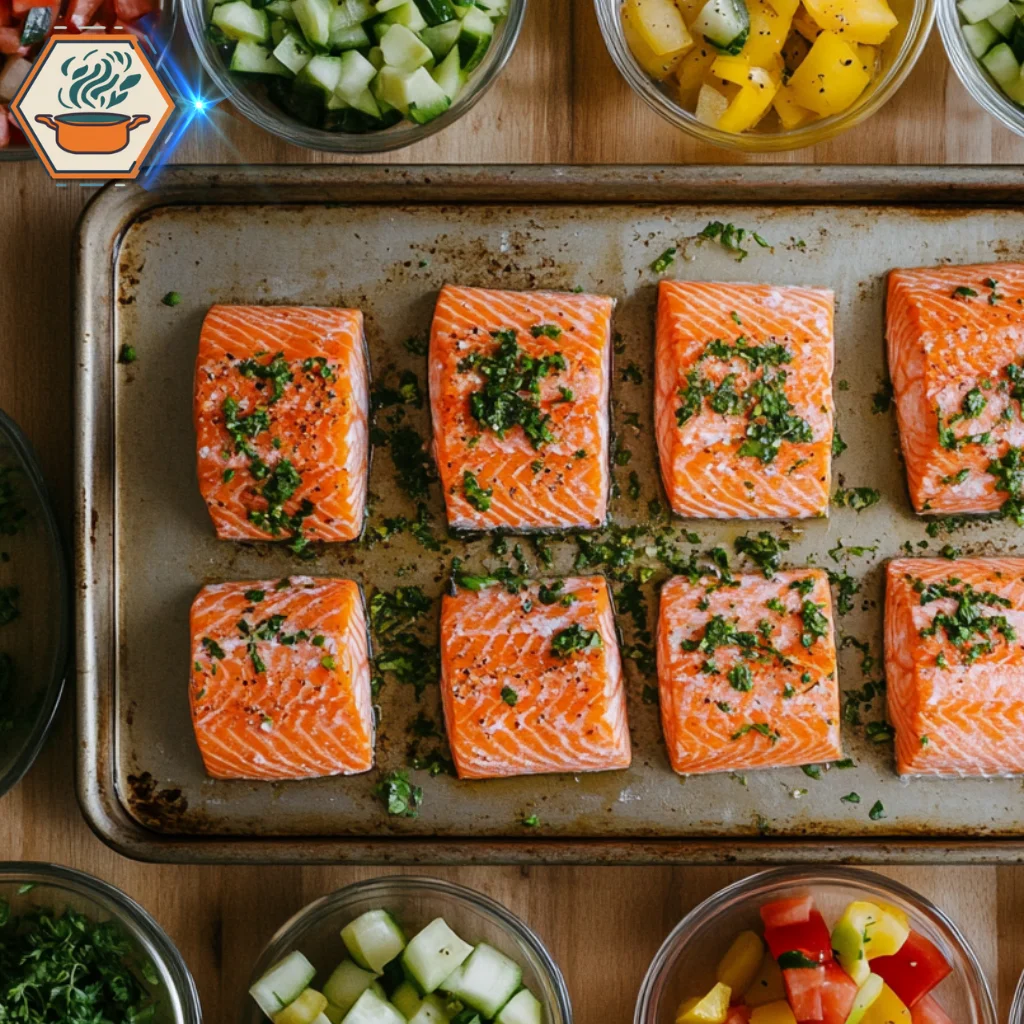
For busy weeknights when health is a priority, baked salmon is the perfect choice. Baking requires minimal preparation, uses little to no oil, and preserves the salmon’s essential nutrients like omega-3 fatty acids and protein. A simple baked salmon fillet seasoned with lemon, garlic, and herbs pairs well with steamed vegetables and quinoa for a balanced, nutritious meal.
Why Choose Baked Salmon:
- Lower in calories and saturated fats
- Retains more nutrients due to gentle cooking
- Easy cleanup with fewer dishes
Quick Recipe Idea:
Drizzle olive oil over the salmon, sprinkle with garlic powder and parsley, and bake at 375°F (190°C) for 15 minutes. Serve with a side of roasted vegetables.
Baked or Fried Salmon for Special Gatherings
When hosting a dinner party or a special event, fried salmon can offer a more indulgent and flavorful experience. The crispy, golden crust achieved through frying creates a satisfying texture that feels more decadent and festive. Fried salmon pairs well with bold sides like creamy mashed potatoes, coleslaw, or even a tangy dipping sauce.
Why Choose Fried Salmon:
- Rich, savory flavor with a crispy texture
- Pairs well with bold, flavorful side dishes
- Offers a more indulgent and satisfying meal
Quick Recipe Idea:
Coat salmon fillets in seasoned breadcrumbs, fry in avocado oil for 4 minutes per side, and serve with spicy aioli for dipping.
Baked or Fried Salmon for Meal Prep
If you’re preparing meals for the week, baked salmon is a practical and healthier option. It stores well in the refrigerator and reheats easily without losing flavor or texture. Baking allows you to cook larger portions at once, making it ideal for batch cooking.
Why Choose Baked Salmon for Meal Prep:
- Stays moist and tender after reheating
- Easier to prepare in large batches
- Pairs well with various healthy grains and vegetables
Quick Meal Prep Idea:
Bake multiple salmon fillets with different seasonings—lemon pepper, garlic herb, and chili lime—to enjoy a variety of flavors throughout the week.
FAQS
Is it better to fry or bake salmon?
The choice between baked or fried salmon really comes down to your personal taste and health goals. Baking is generally the healthier option, as it uses less oil and better preserves the fish’s natural omega-3 fatty acids. Frying, on the other hand, gives the salmon a wonderfully crispy skin and a richer flavor, making it a perfect choice for an indulgent meal.
What is the best way to cook salmon?
There is no single “best” way to cook salmon; it depends on the desired outcome. For a healthy and straightforward preparation, baking is an excellent choice. If you want a crispy skin and a juicy fillet, pan-frying is unbeatable. Other great methods include grilling, poaching, or using an air fryer for a crispy, low-fat result.
Should you flip salmon when baking?
When baking salmon, it’s generally not necessary to flip it. Baking on a single side allows the fish to cook evenly while retaining its moisture and flaky texture. Flipping the fillet could cause it to fall apart and dry out.
Why should you bake instead of fry?
Baking is the preferred method if you’re looking to reduce calories and fat. The gentle, even heat of the oven helps the salmon retain its essential nutrients, especially the heart-healthy omega-3s, without the need for added cooking oil. Baking is also a less messy and more hands-off process compared to frying.
How does Gordon Ramsay cook salmon perfectly?
Gordon Ramsay’s secret to perfect salmon is to start it skin-side down in a hot pan. He uses a little oil and presses down on the fillet to ensure the skin gets super crispy and golden. After a few minutes, he flips the fish to finish cooking, often basting it with butter, garlic, and herbs for maximum flavor. This pan-frying method focuses on achieving a fantastic texture and a rich taste.
Should I use butter or oil to cook salmon?
Oil is generally recommended for high-heat cooking, especially when frying, as it has a higher smoke point than butter. Oils like avocado or canola are excellent choices. Butter can be added towards the end of the cooking process or used for low-heat applications to infuse the salmon with a rich, nutty flavor, particularly for a pan sauce or finish.
What is the most popular way to eat salmon?
While there are many ways to enjoy salmon, both baked or fried salmon are among the most popular. The fish is also widely consumed raw in dishes like sushi, sashimi, and tartare, prized for its fresh flavor and nutritional benefits.
The Verdict: What’s the Best Choice for You?
Ultimately, the choice between baked and fried salmon comes down to your goals: health, convenience, or indulgence. For a healthy, light, and easy-to-prepare meal, baking is an unbeatable choice. If you’re looking for an intense flavor and a crispy texture for a special occasion, frying is a delicious option.
The ideal approach is to master both methods and use them depending on your mood and the occasion. Which salmon cooking method do you prefer? Let us know in the comments below!

